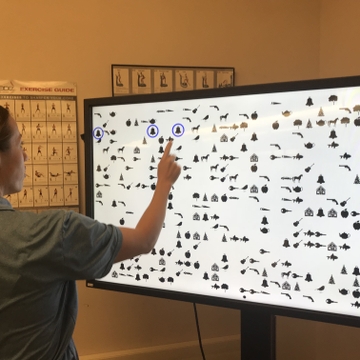Keeping the “ER” out of SummER Fireworks Fun

UNM Children’s Hospital Opens State’s First Concussion Clinic
Getting Your Head Back in the Game
The University of New Mexico Children's Hospital opened a new pediatric concussion clinic this summer to provide integrated, comprehensive care for complex brain-injury cases that come to the hospital, but might not require admitting for intensive rehabilitation.
The timing seems right, as fall sports are full speed ahead for New Mexico youth as school athletics resume across the state. Despite the best efforts of coaches, parents and students themselves, there will be concussive contact from myriad collisions between athletes.
Brain concussions are more common among kids than we might think. In 2016, 7 percent of U.S. children ages 3-17 years will have experienced a significant head injury at some point in their early lives, according to the Centers for Disease Control and Prevention's National Health Interview Survey.
"Kids can get concussions any number of ways," says Nancy Rasch, manager of Carrie Tingley Hospital outpatient rehabilitation services, which houses the new clinic. "Certainly from physical contact sports, but really anything that has motion associated with it - car accidents, falls and other more common incidents."
Concussions are mild brain injuries following some sort of trauma. If recognized and treated, most people recover fully from a single concussion. However, children and adolescents can sustain multiple concussions within the same event, sometimes unknowingly, Rasch says.
"These injuries tend to take longer to recover from each time and are more likely to have lingering symptoms resulting in lifelong physical, cognitive and psychological problems," she explains. "So, we've developed an interdisciplinary post-concussion clinic to work on patients with multiple symptoms."
Concussion symptoms can include a headache, nausea or vomiting, being exceedingly sleepy, sensitivity to noise and light, numbness or tingling anywhere on the body, dizziness or loss of balance, irritability, double vision, and many others. The concussion clinic will see patients up to age 21 for treatment or a care plan.
A number of specialists can work together on cases, based on the patient's symptoms and needs. These interdisciplinary teams might include pediatricians, balance specialists, neurologists and neuro-ophthalmologists, physical, occupational and speech therapists, psychologists and psychiatrists, and others.
For now, pediatric concussion clinic patients are referred by UNM Children's Hospital, the pediatric emergency room and other departments within the UNM Health System. The process begins with a concussion or mild traumatic brain injury diagnosis, and continues with primary care evaluations over the next several days, with repeated cognitive testing and concussion screenings.
If conditions persist, and the patient shows attention deficits, hearing or vision problems, difficulties in school, emotional symptoms, sleep issues or other symptoms, they can be referred to the clinic.
The first stage of healing might require no activity and complete quiet time and rest, meaning no group interactions, videos, reading, computers, cell phones or noisy places. "It's very important that the brain rests after a concussion," Rasch says. "As healing commences, we can introduce some light aerobic activity, walking and stationary cycling, but will still want to limit group activities."
Activities are gradually increased over time based on the child's response to treatment, and, ideally, students are able to resume normal academic and athletic activities.
"We evaluate and treat all elements of an injury, including anxiety, balance or visual impairment, and more," Rasch says. "It's a real opportunity to educate parents and families about post-concussive care and the importance of a full recovery."